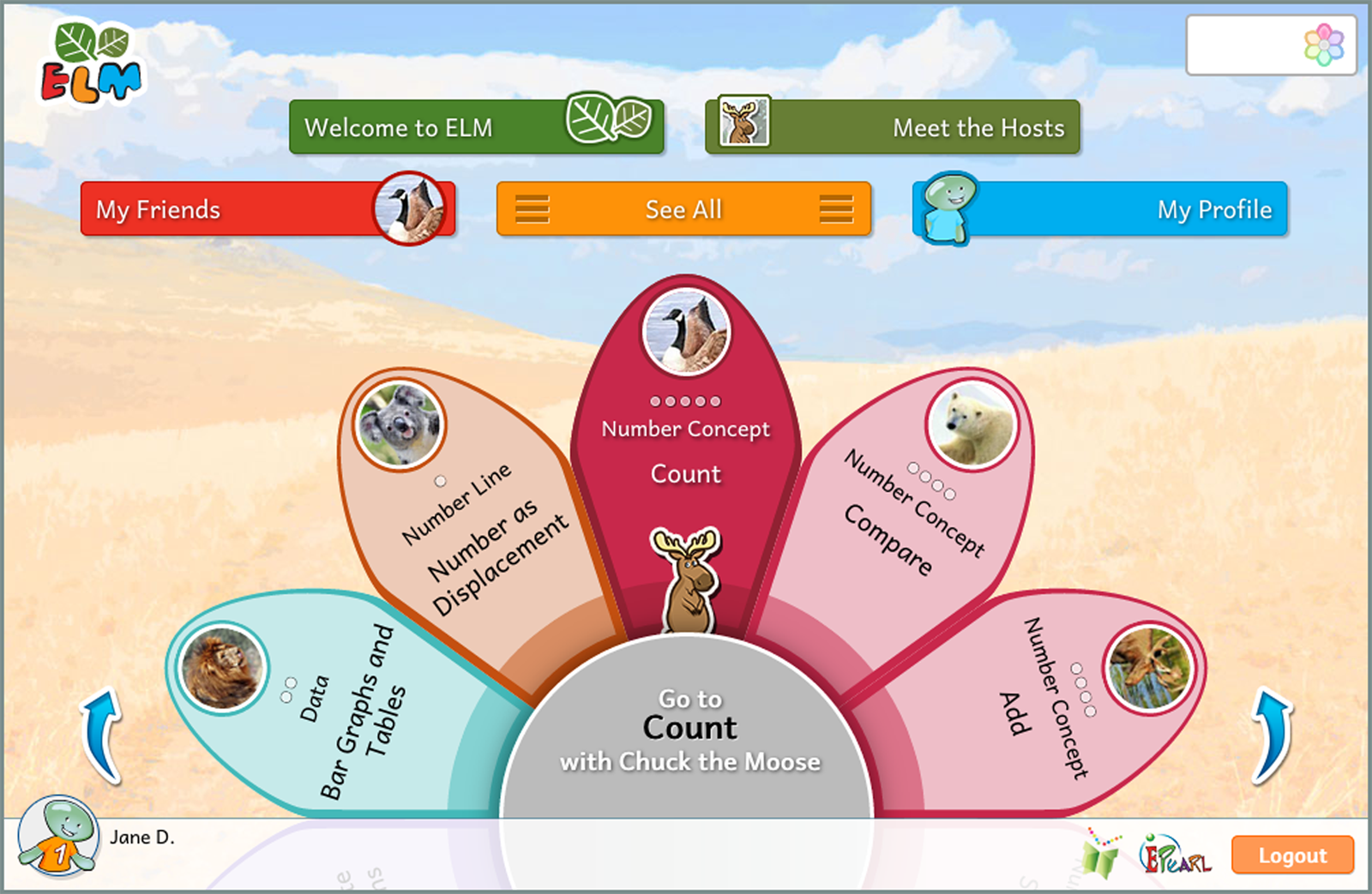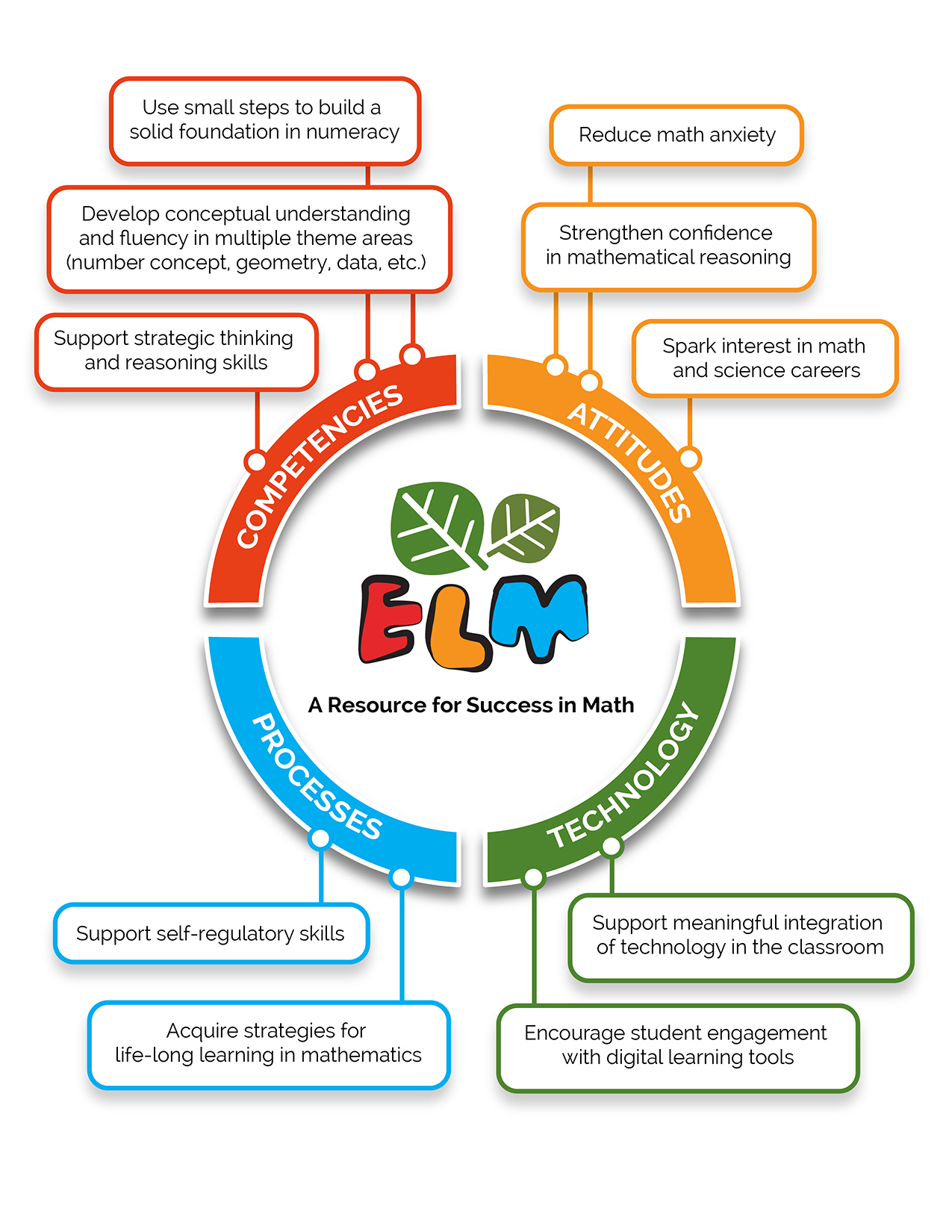ELM Parent Module
A collection of resources to support your children’s numeracy skills and use of ELM.
ELM, which stands for Emerging Literacy in Mathematics, is a digital tool designed to help your child develop numeracy skills.
In this Parent Module, you will find information about ELM and how it supports numeracy skills. You will discover practical and fun tips for helping your child develop those skills and avoid math anxiety.
Before you get started, check out the short introductory video for an overview of ELM.
How Can Parents help?
Parents have a key role to play in helping their children develop numeracy. You don’t need to be an expert—or even to love mathematics—to make a difference. You just need a willingness to talk about and incorporate activities focusing on numbers, counting, geometry, etc. If you suffer from math anxiety, don’t worry. You will learn how to help your child without feeling stressed.

What is numeracy?

Numeracy is the ability to use mathematics effectively and confidently in life.
Numerate people are able to:
- Recognize when a situation requires the use of mathematics.
- Select the right mathematical tool for that situation.
- Use mathematical tools with fluency and ease.
- Understand information presented in mathematical terms.
- Confidently use mathematical reasoning and problem-solving skills.
In concrete terms, a numerate child will be curious about, explore, and use math across many different situations. For example, a child may:
- Measure ingredients while cooking with parents;
- Count and keep score during a game;
- Successfully complete jigsaw puzzles;
- Read a map;
- Figure out how to divide toys or treats among a group of friends;
- Count out the correct change at a store.
Why is numeracy important?
Every day, we use mathematics in many ways—figuring out how much to tip the server at a restaurant, completing our tax returns, calculating the time (and gas) needed to drive our children from soccer to piano to swimming and back home. Being able to use mathematical skills effectively and confidently makes life easier. It also opens career paths in areas such as:
- STEM (science, technology, engineering, mathematics) fields
- Health sciences
- Banking and finance
- Psychology, social work, and other helping professions
- Construction
- Hospitality
In fact, there is likely no job in which a person won’t need to use some math skills.
What if math makes myself or my child anxious?
Unfortunately, early difficulties with mathematics can make people feel that “math is too hard” or “I’m no good at that number stuff.” Anxiety often results in people avoiding mathematics classes thus closing off interesting career options. One of the most important things parents can do is:
Be positive about math!
Don’t tell your children how much you “hate” math or how “bad” you are with numbers. Instead:
- Tell your child “you can do it” when it comes to mathematics.
- Encourage your child to keep working hard at mathematics.
- Remind your child that mistakes are a normal part of learning.
- Ask the teacher to intervene if a child is feeling overwhelmed.
To find out more, visit the Tips section.
How Does ELM Work?
ELM has been created with input from teachers, students, and researchers in order to make it both effective and engaging.

ELM sets up children for success in mathematics by:
-
Encouraging engagement
ELM uses a game-like structure in which children solve puzzles to earn trading cards featuring animal friends. Our classroom observations show that children enjoy their animal friends, and are motivated to work hard and focus on the assigned tasks.
-
Building fluency and understanding
ELM activities build slowly and carefully, allowing sufficient repetitions for children to achieve both fluency and understanding.
-
Allowing an individualized pace
Activities are designed so that each child can work at his/her own pace.
-
Offering just-in-time-help
Activities provide instant access to appropriate audio help to try and ensure each child’s success.
-
Providing immediate feedback
After completing a task, the child is shown immediate feedback that either confirms success or assists in understanding error(s) through both visual and audio cues. If a child makes repeated errors, the software alerts the teacher who can then provide more help.
ELM Framework

